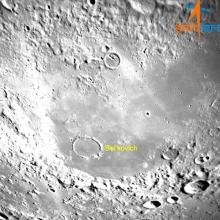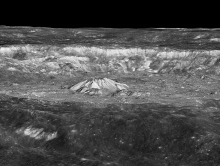Listen to today's episode of StarDate on the web the same day it airs in high-quality streaming audio without any extra ads or announcements. Choose a $8 one-month pass, or listen every day for a year for just $30.
You are here
Better Radar
The full Moon scoots low across the south tonight, shining on us from Libra, the balance scales.
A couple of years ago, astronomers snapped the sharpest pictures of the Moon ever taken from Earth. They showed details as small as a few feet across — shot with radar. The images were a demo for a project to develop the most powerful planetary radar system ever.
Astronomers have been using radar for six decades. It told them how fast Venus turns on its axis and revealed ice at the poles of the planet Mercury. It’s also tracked some asteroids that could one day threaten Earth.
The most powerful radar used the giant Arecibo radio telescope in Puerto Rico. But it collapsed a couple of years ago. NASA’s Deep Space Network does some of the work, too. But its main job of tracking missions across the solar system keeps it busier and busier.
So astronomers built a transmitter that used less power than a microwave oven to beam radio waves from the Green Bank Telescope in West Virginia. A network of other antennas caught the reflections. The demo produced the images of the Moon and tracked an asteroid that was more than five times farther than the Moon.
Now, astronomers want to make the system a thousand times more powerful. That would let them map other planets and moons, discover hazardous asteroids at much greater distances, and track junk around Earth and the Moon — making the space around our planet a little bit safer.
Script by Damond Benningfield





